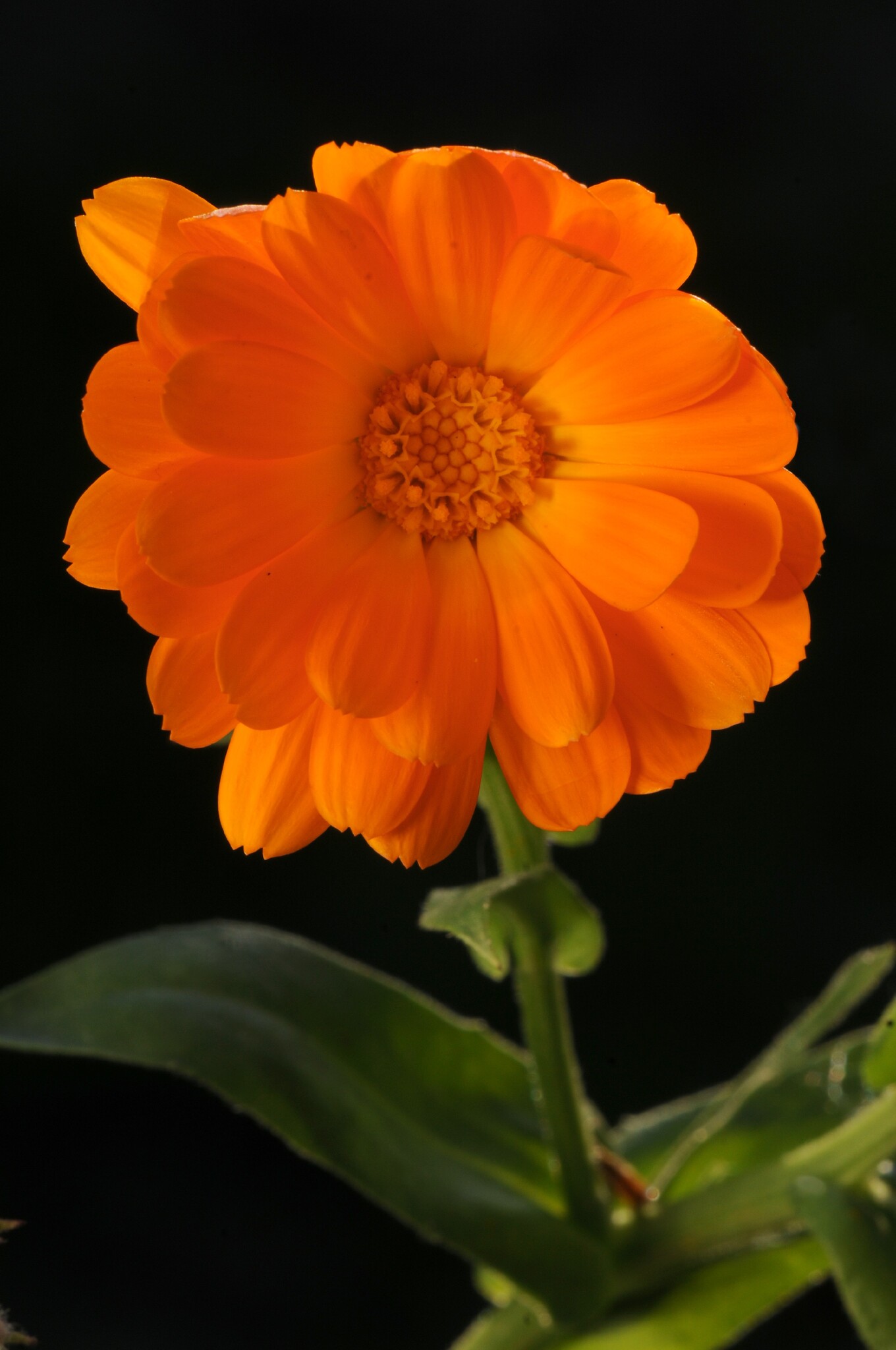
Latin calendae — the calends or first day of the month, as some species may flower any month of the year.
Annual to perennial herbs or subshrubs, often glandular, aromatic. Leaves along stems, alternate, entire, toothed or lobed, sessile. Capitula radiate, terminal, usually solitary. Involucral bracts in 1 or 2 overlapping rows, more or less equal. Receptacle pitted, flat. Ray florets female, fertile, yellow or orange. Disk florets bisexual, inner ones functionally male, tubular, yellow-red or brownish. Achenes often ridged, spiny or warty, of 2 kinds; outer curved, 3-angled or beaked; inner distinctly curved, sometimes winged, sometimes annular. Pappus absent.
Three species are weakly naturalised in Australia.
Strongly curved, often warty, ridged, beaked or winged achenes lacking a pappus.
About 15 species from Macaronesia, N Africa, Europe and the Middle East.
Source: (2002). Asteraceae. In: . Horticultural Flora of South-eastern Australia. Volume 4. Flowering plants. Dicotyledons. Part 3. The identification of garden and cultivated plants. University of New South Wales Press.
